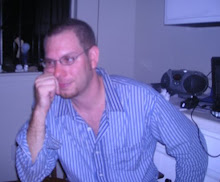Discoveries
Wow. Sometimes something obvious hits you over the head like a ton of bricks. I have been reading Richard Dawkins' seminal book on evolution, "The Selfish Gene," and suddenly realized that DNA acts a lot like radioactive material as it is dispersed over generations through sexual reproduction. In other words, one person's full DNA only exists by 1/2 in their child, 1/4 in grand-child, 1/8 in great-grandchild, etc. Just like over a half-life time period a radioactive material will decrease by %50.
At the same time, %50 of one person's DNA may be replicated several times through several children, though it may not be the same %50, and it does not change the fact that the full DNA of any given person will never exist as more than %50/25/12.5/... in any given generation. SO the DNA decrease is not continuous like radioactivity, but the unpredictability of which part will constitute the next %50 is.
After long and arduous contemplation, I think I have realized that my buddy Chris (see comments) is right and what I have referred to above applies only to the gene pool, or chances of inheriting the same genes (although the first child will always have %50 of both). Sorry for the delayed correction.


5 Comments:
you dont have to post this...i was thinking about your work and i really like it, but it sounds to me like you haven't fully opened the door on yourself. why are you interested in this subject? what does it mean to you? people may crave a human touch when you're tangling with the metaphysical, with loss and creation.
now for a cheesy aside: what if you were to incorporate some photographs in your exhibit? I was thinking of a series depicting large crowds (e.g. pedestrian traffic), where each picture depicts fewer people on the street until there are few-none. or maybe one. or a shadow?
except for the inbreeding.
also, i am no scientist or anything, but i am pretty sure this isn't how inheritence works. perhaps statistically speaking this is mostly true or the most likely proabilities, but it exists as more of a bell curve around each number (with an obv. ceiling at 50%). it is slightly possible, tho unlikely, that 50% or 0% could pass down two generations removed from a person, depending on independent assortment and such. so mostly true, but not "never exist" true. or something. i've donated more than 50% of my brain to the departed 50% of my DNA so i can never be sure about much anymore.
Chris, I am referring to what the book said. Dawkins refers to the x/y chromosomes as containing %50 of the male/female chromosome pair (DNA). I know that in reproduction there are factors such as mutations and some swapping that will probably wipe out the miniscule ancestor relationship quicker than the theory of halving forever, but also we do have a lot of DNA that has been passed down from way back from someone obviously. The bell curve idea is interesting and plausible, I would not be surprised if the half-life measurements of radioactivity also conforms to this sort of approximation. The approximation seems relevant to me in that it also represents a curve where the "true" number is always being approached and never quite reached- much like my inability to physically realize these models of abstract ideals.
no need to post this, but since you don't read our email anymore:
if you just look at the X/Y (instead of all 23) it isn't necessarily true at all. a lineage of men will all have the same Y, so if you look just at that pairing it will either be 50% (sons) or 0% (daughters) with no in between. also over the span of humanity it seems that the laws of thermodynamics would argue against this decay (going from relatively few people, thus relatively few "unique" chromosomes to going to a whole lot of people without the introduction of novel chromosomes).
I didn't mean 1/2 as in either the X or the Y, but 1/2 with regard how much of original ancestor's DNA is in either the X or Y sperm/egg.
Post a Comment
<< Home